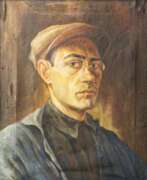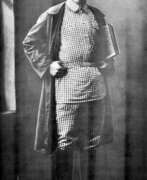Turkmenistan
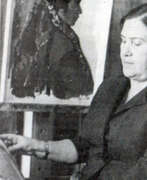

Yevgeniya Mikhailovna Adamova (Russian: Евгения Михайловна Адамова) was a Soviet artist of the second half of the twentieth century. She is known as a painter, People's Artist of the Turkmen SSR.
Yevgeniya Adamova, who moved to Turkmenistan from Ukraine in her youth, was educated at the Ashgabat Art School. During the Great Patriotic War, she creatively expressed herself as a poster artist in the TurkmenTAG agency. The artist created thematic paintings dedicated to the life of the Turkmen people and portraits. She held the post of deputy chairman of the Union of Artists of Turkmenistan.
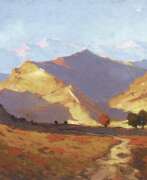

Gennady Fyodorovich Babikov (Russian: Геннадий Фёдорович Бабиков) was a Soviet and Turkmen artist of the twentieth century. He is known as a painter, graphic artist, watercolorist, master of landscape and still life and is considered the founder of the genre of Turkmen industrial landscape, representative of the Russian academic school of painting in Central Asia.
Gennady Babikov participated in the Great Patriotic War, at the front he created more than 100 graphic portraits of fellow soldiers. The artist was famous for his linocuts, and also developed a still life style, which was called "Babikov's" in Turkmenistan.
His works are in many private collections around the world.
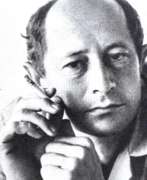

Stanislav Gennadievich Babikov (Russian: Станислав Геннадьевич Бабиков) was a Soviet and Turkmen artist of the mid-twentieth century. He is known as a painter, graphic artist, publicist, scenographer, as well as the son and pupil of Gennady Babikov, the founder of the Turkmen industrial landscape genre.
Stanislav Babikov is considered a continuator of the ideas of Russian Cezannism. He was a member of the informal Turkmen group "Seven", which sought to synthesize national elements and Western modernism in art. The master was also an author of articles on fine arts. His style reflects the influence of nature and climate of Turkmenistan and is characterized by bright color and expressiveness of color.
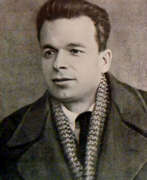

Ivan Ivanovich Cherinko (Rusian: Иван Иванович Черинько) was a Soviet Ukrainian artist who moved to Turkmenistan, after visiting Ashgabat in 1933 and finding the city beautiful and picturesque. He was among the Russian-trained artists who came to Turkmenistan and created works of art the captured the nature and culture of the republic. He founded the Union of Artists of Turkmenistan in the 1930s and co-founded the Sh. Rustaveli Turkmen Art School. In 1945, he was named an Honored Art Worker of the Turkmen Soviet Socialist Republic (Turkmen SSR, 1925–1991).
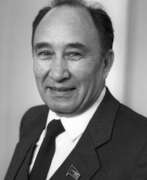

Izzat Klychev (Russian: Иззат Назарович Клычев) was a prominent figure in Turkmen and Soviet art, widely celebrated for his significant contributions to the realm of fine arts. Born on October 10, 1923, in Turkmenistan, Klychev was not only an esteemed painter but also a notable public figure who played a crucial role in nurturing several generations of Turkmen artists. His works, which often focused on the daily lives of people, the beauty of Turkmenistan, and its cultural heritage, received recognition for their vibrant colors and expressive storytelling. Klychev's artistic journey was marked by his innovative use of color and his ability to capture the spirit of his times, blending national and international themes.
Klychev's portfolio includes a broad spectrum of subjects, from landscapes and still lifes to portraits and historical themes, showcasing his versatility as an artist. Notably, his series "My Turkmenistan" earned him the USSR State Prize in 1967, highlighting his profound impact on Soviet and Turkmen art. His style, characterized by a harmonious perception of diverse cultures, was recognized and praised internationally. Klychev's paintings have been exhibited worldwide, in countries ranging from the USA to Japan, and are part of collections in prestigious museums, including the State Tretyakov Gallery and the State Museum of Oriental Art in Moscow.
Beyond his artistic achievements, Klychev's legacy includes his charitable activities and his leadership within the Artists Union of Turkmenistan, where he actively supported young artists and contributed to the formation of an artistic community known as "The Seven". His commitment to art education and his role as a mentor to future generations underscored his dedication to the cultural and artistic development of Turkmenistan.
In summary, Izzat Klychev stands out as a figure who not only enriched Soviet and Turkmen art with his creative vision but also played a pivotal role in shaping the artistic landscape of his country, leaving a lasting legacy that continues to inspire. His life's work reflects a deep connection to his heritage and a broad engagement with the world, making him a key figure in the history of 20th-century art.
For those interested in the history of art and cultural heritage, Klychev's contributions represent an essential chapter in understanding the evolution of Soviet and Turkmen artistic expressions. Collectors and experts in art and antiques are encouraged to explore his works further and sign up for updates related to Izzat Klychev, ensuring they stay informed about new sales and auction events featuring his remarkable creations.


